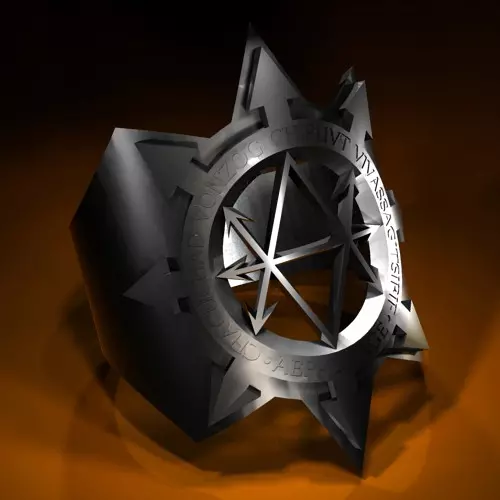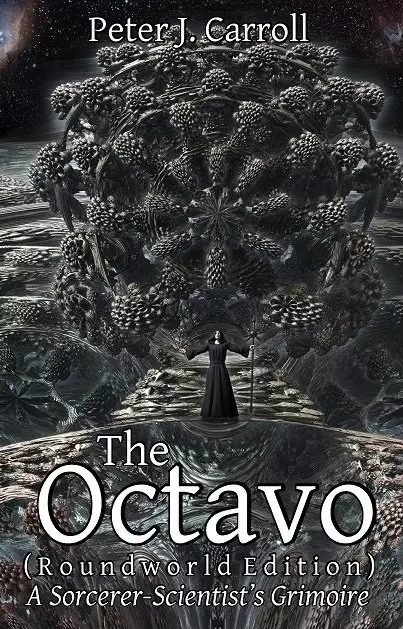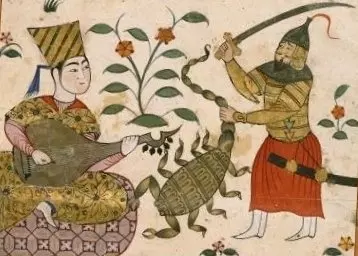Blog

- Details
- Hits: 20608
With reference to the previous post, it all gets worse and worse for Rupert, one wonders how much he will have to pay Rebecca to keep himself out of jail?
Anyway, to more important matters; THE KNIGHTS OF CHAOS.
Rapacious short term interests despoil our planet, we have massacred the fish and filled the oceans with filth, we have cut down the forests and degraded the land, we have exterminated many thousands of species; we have embarked on a massive combustion of fossil fuels that threatens a fatal climatic catastrophe for the remaining species, including ours.
Whilst a broad scientific consensus accepts that current policies will lead to planet-wide ecological disaster later in this century, most people choose to turn a blind eye, whilst short term vested interests in politico-economic; commercial-industrial; and religious organizations continue to promote ever more indiscriminate growth in consumption and population
Many pagan, esoteric, new-age and alternativist organizations have now committed to the cause of saving this planet’s biosphere from the ravages of climate catastrophe, overpopulation, overconsumption, , and the general degradation of the environment, which will lead inexorably to the collapse of the biosphere and the end of civilization during this current century if humanity does not change its ways. Some work with publicity and persuasion, some work with other forms of information warfare, some work with consciousness raising or prayer. We applaud all their efforts.
However one niche in the resistance array seems neglected. The world’s Wizards and Sorcerers have yet to make a coherent contribution to the cause of saving the biosphere and civilization. Perhaps they feel a bit embarrassed about this because their Magician forebears largely initiated the whole scientific revolution; the technological offshoots of which have provided humanity with so many opportunities to act with such power and myopic stupidity.
Nevertheless, it now seems imperative for us to act. History shows that a small handful of Wizards has often had an effect out of all proportion to their numbers; we can change the future if we want to. Never underestimate the power of metaphysics and parapsychology, for all cultural paradigms and beliefs and ideals, and all thoughts and ideas depend on them.
We thus extend a planet-wide invitation to anyone with magical abilities or the suspicion that they might have them, (we all do actually, most people just don’t realize this) to join us in the next campaign of The Knights of Chaos (First Earth Batallion). We will use direct psi-attack on a number of political, corporate, and religious targets for the purposes of neutralization or behavior change, doing nothing illegal (or indeed believable), by the standards of westernized societies.
We have in place a Grimoire resuming a suitable god-form and an array of eight servitors with groundsleves from previous preliminary campaigns, plus a number of ‘kills’ in the bag from those campaigns, but we need to do much more. The primary techniques employed come from the traditions of Chaos Magic, i.e. gloves off, believe in what works on a practical level, nothing sacred, everything possible…….
The Knights and Dames of Chaos and Applicants to the Order will commence another campaign at www.arcanoriumcollege.comstarting on 26th July 2011. (This site levies a small registration fee to maintain itself and to discourage frivolous activity and dilettantes.)
Now seems a good time for all Wizards, Sorcerers, and Magicians of the world to come down from their Ivory Towers and cease conjuring for personal wealth and power or arcane knowledge and interesting incubi or succubi, or you may not have much of a planet left on which to enjoy them.
We have naught to offer in the short term but blood, sweat, and tears, severe a challenge to your skills, a sense of comradeship, the satisfaction of knowing that you did your bit, and maybe a few titles and medals*.
Alternatively just wait till you’re sitting in the ruins of civilization contemplating the last tin of canned food whilst your kids ask ‘Why didn’t you do something back then!?’
Stokastikos 127, The Acting Marshall, Knights of Chaos.
(*Above see a Battle Honour Ring of the Knights forged by our Adeptus Mechanicus)

- Details
- Hits: 20035
I note with great joy the enormously deserved death of the News of the World 'newspaper'.
Gerald Suster (he was a friend and colleague) thou art avenged at last, see:
http://www.independent.co.uk/news/obituaries/gerald-suster-728836.html
This disgracefull arse-rag of a paper has, with its constant mixture of lies, traductions, set ups, invasions of privacy and hypocritical purience, provided a stain on the traditions of journalism and an insult to the intelligence of the British public for far too long, may it, and all the scum who have knowingly colluded in its lies, rot in hell for eternity, good riddance.
Pete.


- Details
- Hits: 18917

- Details
- Hits: 22476
A brief essay on the origins of some contemporary esoteric ideas.
Over a recent lunch, Professor Ronald Hutton surmised to me that H.P. Lovecraft’s idea of the Necronomicon probably arises from the Arabic Gayat al Hakim manuscript which later appeared in Latin as the Picatrix Grimoire.
The Gayat al Hakim/Picatrix itself shows the strong influence of Egyptian magic and Neo-Platonic and Hermetic magic and leads to conceptions of Planetary Theurgy, which later appear explicitly in the medieval and renaissance grimoires.
The whole idea of a dread grimoire having as its author ‘Abdul Alhazred, the Mad Arab’, fits in rather well with the Gayat or its derivatives having inspired H.P.Lovecraft’s Cthulhu mythos stories, or at least his idea of the Necronomicon.
Planetary magic or at least planetary religion seems to have begun in Hellenic classical cultures when the ancient Greeks and Romans identified some of their gods and goddesses with the planets of the solar system, Mercury, Venus, Mars, Jupiter, Saturn, and the Moon, although the beginnings of this idea appear in the Babylonian culture.
As the classical religions fell to creeping monotheism, the idea of planetary powers or spirits survived in Gnosticism, reappearing as Archons, entities attributed to the various planets which the aspiring Gnostic had to master to achieve spiritual progress. Some Gnostics viewed the Archons as malignant or obstructive spirits standing in the way of the ascent of the adept back to godhood. In the medieval grimoires we also see the idea of some of the planetary intelligences and spirits having malignant characteristics, and such ideas may well have also fed into the Necronomicon mythos, after all the title itself implies a book of ‘dead names’, or at least those of long forgotten gods.
Eventually, ideas from Hermeticism, Neo-Platonism, Classical Paganism, Late Classical ‘Pagan Monotheism’, and Gnosticism, The Medieval and Renaissance Grimoires and a late form of Kabala, (together with a dash of spiritualism and colonial orientalism), all come together in the late 19th century to form a grand synthesis that we could call “The Standard Model of Magic’ forged by the adepts of the Golden Dawn (mainly MacGregor Mathers it seems).
From this synthesis comes most of the magical theory and technology on which various people built such traditions as Thelema, Wicca, Neo-Paganism, Neo-Druidry, Chaos Magic, and indeed most of the esoteric components of the New-Age movement, in the second ‘occult revival’ beginning in the last three decades of the 20th century.
In contra-distinction to the prevailing but declining monotheism and the increasingly dominant mechanistic-materialistic scientific world views of the late 19th and 20th centuries, this new esoterics began to view its ‘deities’ not as almighty cosmic creators but as archetypal ‘god-forms’ representing human scale abilities and aspirations, and ‘spirits’ as fundamentally arising from the activities of ourselves and living organisms and natural phenomena, rather than as the authors of such phenomena. Thus magic became again the art and science of theurgy; making ‘spirits’ and ‘godforms’, (or your own subconscious archetypes and parapsychological abilities), perform on demand.
Thus Invocation, Evocation, Divination, Enchantment, and planned Illumination came to replace the religious practices of worshipful prayer or prayerful supplication, and semi-mechanistic parapsychological models of apparently magical phenomena came to augment the developing ‘hard’ scientific paradigm.
The basic techniques came down to ritual enactment, the drawing of various mystical signs and symbols, incantation, visualization, and altered states of consciousness by various physiological means, to which Crowley of course added sex and drugs.
Chaos Magic then added an additional battery of consciousness altering techniques from many sources, and the theory that sacredness, sanctity, and meaning depend entirely on operator choice, rather than on historical or spiritual precedent, thus defining belief as a tool rather than as an end in itself.
Perhaps the most significant development of the second magical revival lay in the realization that you could use any symbolism you liked, ancient or modern or imaginary, and write your own rituals and incantations, and that these would have magical effects so long as you used the appropriate practical techniques, altered states of consciousness, and sleights of mind. This development lay implied in the great synthesis that the adepts of the Golden Dawn created, although they attempted to disguise the fact by attributing their creations to certain ‘secret chiefs’. It became fully explicit only in the second magical revival under the aegis of Chaos Magic where practical techniques assumed primary importance and the symbolic representations of antiquity became regarded as mere window dressings of choice.
Rather than adopt any particular ancient or antique pantheon Chaos Magic built a simple color coded psychocosm based on magical intent;
Blue for works of wealth and power. (~Jupiter)
Orange for works of intellect and quickness. (~Mercury)
Green for works of love and friendship. (~Venus)
Red for works of vitality and aggression. (~Mars)
Black for works of death. (~Saturn)
Silver or Purple for works of Sex. (~Moon)
Yellow for works of Ego and Extraversion (~Sun)
Octarine for works of Pure Magic Research & Quest. (~Uranus)
This scheme functions rather like the modified tree of life kabala that the GD originated except that the spheres do not lie in an hierarchy, but rather in a round table of equality with the possibility of combining archetypes for less straightforward entities, for example the newly revived goddess Eris might appear as having Red-Purple characteristics which we can use to structure an Invocation. Odin for another example; does not equate well with any single sphere derived from classical-kabalistic considerations.
At Arcanorium College, www.arcanoriumcollege.com, an international internet based adventure; we have an ongoing project to create what we have provisionally called The Portals of Chaos, a graphic grimoire. This will consist of a set of CG images on moveable cards which the magician can use for Invocation, Evocation, Enchantment and Illumination as well as just for Divination.
It will bear little resemblance to a conventional Tarot for it will have the above 8 major god forms and their associated planetary ‘spirits’ and intelligences’ as well as 28 god and goddess forms representing ‘mixed’ attributes corresponding to various personality types, assorted deities from many pagan pantheons, and various magical intents.
Plus it will probably have a number of ‘random’ event cards for the anticipation of such in divination or the imposition of such in enchantment.
Also we have chosen the big five entities from the Necronomicon; Cthulhu, Nyarlathotep, Shub-Niggurath, and Yog-Sothoth to represent various cosmic scale phenomena such as panspsychic panspermia, higher dimensionality, eldritch knowledge from morphic fields, and so on.
So, if we aim to create A Worke of Magical Arte, with useful practical applications, then perhaps we continue in a very ancient tradition. All Grimoires then appear as objectively 'fake' including the imaginary ones like the fabled Necronomicon, because the deities and monsters in them derive from cobbled together bits of our own psychology and mythology, which nevertheless can have a real psychological and parapsychological power for us.
Perhaps then we should regard Grimoires in general as 'workes of arte', as convenient analogical impositions, rather than as objective maps of the incredible complexity of the cartography of our own psychology.
In the composition of The Portals we aim to give it all we have got, including superb computer assisted graphic design, in the hope that it will actually improve upon the Picatrix and the Necronomicon ideas, whilst acknowledging them as precursors in an historical tradition of artistic magical thinking........
Plus also magical cup Mk 2. After a fortnight's intense metaphysical struggle it came to me that a Magical Cup should function as a device to stimulate the imagination, rather than to impose a structure on perception, thus its new stochastic design.
- Details
- Hits: 19954
Smokin
Having campaigned so ferociously for punitive taxation on tobacco, anti-smoking propaganda, and legal bans on its public use, the British Medical Association should express little surprise that they now have an epidemic of obesity and alcohol abuse to deal with.
British pubs close at the rate of about 200 per week now, and those watering holes which remain have become markedly less agreeable as people cease to pace their drinking and their tempers with cigarettes, and just keep pouring the drinks down. Personally I feel much more comfortable walking home though a street full of smokers than a street full of drunks.
How come the great magus himself rarely appears without a lighted cigarette or an electronic one in the places where they ban the real thing, many people ask.
I cite historical evidence. Adolph Hitler, a teetotal, vegetarian, non-smoker, dead at 54 and reviled for eternity. Winston Churchill, a cigar chomping, brandy swilling carnivore who insisted on the right to smoke before and after meals, between courses, and also during courses if desired. He lived till almost 90 and will remain a hero forever. He also got a Nobel Prize for literature, which is more than we can say for the author of that demented rant Mein Kampf.
Just remember that the majority of the best stuff you ever read was composed by people meditating on their texts over a pipe or a cigar or a cigarette.
Whenever some self-righteous pot-bellied anti-smoking nazi casts a disapproving glance in my direction I smile back, confident in the knowledge that I could almost certainly outrun or out-swim him over any distance.
Teenagers will always want to experiment with forbidden things. Thus it seems rather silly that we have created a situation where a packet of cigs now costs more than some hard drugs or enough cheap booze to hospitalise yourself.
Yesterday the BMA asked the UK government to impose a total ban on smoking in cars; the law will hopefully not pass. Smokers have a 2 yard advantage in an emergency stop because they’re more alert than ordinary mortals. Rather we should make smoking, or at least nicotine chewing gum, compulsory for drivers.